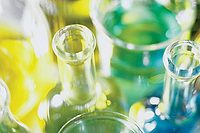What is your vision for the Pine Chemicals Association International?
Pine chemicals add tremendous value to customers and society. In addition to their use in adhesives and sealants, our products are found in flavors, fragrances, lubricants, inks, tires, pharmaceuticals, and many additional applications.
The Pine Chemicals Association International (PCA) represents a relatively small but vital portion of the overall chemicals industry. We want to ensure that our true value is well understood: from the role our chemicals play in a multitude of industries, to how we serve as an economic engine generating jobs and commercial benefits worldwide, to our differentiation from other chemicals, to our roots in sustainability.
In this context, our vision is for the PCA to be the global leader representing, supporting and advocating for the value of pine chemicals. Ours is a multi-billion-dollar business that is truly international―both in our membership and the customers we serve. When we held our first International Symposium on Pine Oleoresin Extraction and Production in Lisbon, Portugal, in February, over 80 industry operators, experts and educators from around the world participated. And just last month, to strengthen our global impact, we added “International” to our name, so that we are now officially the Pine Chemicals Association International.
How is the PCA supporting pine chemicals’ role in the adhesives and sealants supply chain?
Pine chemicals are vital components of the adhesives and sealants supply chain, and we provide visibility and support at every step in the process. The PCA covers the entire pine chemicals lifecycle, whether starting from pine tree seedlings and the tapping of trees, or going from the seedlings to the pine chips used in paper and pulp processing, or the process of recovering crude tall oil and crude sulfate turpentine. Each of these processes is crucial in the development and manufacturing of the different pine chemicals that are used by our customers to make their downstream products. We’re looking at that full spectrum to ensure that our customers have continued access to our valuable materials.
By taking a comprehensive perspective that encompasses our product lifecycle, the PCA is dedicated to helping use natural resources responsibly, maximizing production efficiency, anticipating and complying with the evolving legislative and regulatory environment, and ensuring that we remain innovative and responsive to changing customer preferences.
To take full advantage of every opportunity in our shared supply chain, the PCA seeks to work in partnership and continually expand our relationship with the adhesives and sealants industry. This will ensure that the pine chemicals industry delivers meaningful solutions and that we communicate about and advocate for our industries’ mutual interests. I believe that by working together, we will drive innovation and advancement throughout the lifecycle. Since joining the PCA in January, I’ve been exploring how to make relationships with customer industries as successful as possible.
What are the hot topics facing the pine chemicals industry?
Innovation, production efficiency, product availability, and environment, health and safety (EHS) are high priorities. I’ve already mentioned that we strive to improve processes throughout the supply chain to meet these needs.
We’re especially proud that our industry contributes to our customers’ ability to achieve their sustainability goals. Since our raw materials come from renewable pine forests, we are one of the original “green” industries. Even going beyond the obvious environmental benefits of using a product from a natural, renewable source rather than a petroleum-based chemical, studies have shown that use of pine chemicals results in lower greenhouse gas emissions than when it is diverted for other uses such as fuel.
Being in the chemical industry, EHS is always at the forefront. However, it’s important to recognize that not all chemicals are the same or have the same risks. Pine chemicals are sometimes overshadowed by the larger chemical industries, and may be erroneously categorized as a result. The PCA is focused on clarifying the fine points of our industry so that we maintain high safety and environmental standards both voluntarily and in tandem with advocating for appropriate regulations. We are doing this by monitoring the different regulatory requirements of governments worldwide—a massive task that is best done in collaboration with others in our value chain.
How are customers in the adhesives and sealants industry affected by these challenges and opportunities?
We know that quality and value are key differentiators of pine chemicals vs. alternative products. That’s why, as an industry association, the PCA is addressing process innovation as a means to gain greater efficiencies and ensure that there is a steady supply of product available.
By representing the full supply chain cycle, from the source to the customer, we are driving more seamless processes and looking at the potential for innovation at each step. We foster discussion between our members and a range of experts who provide insights into better forest management techniques, improved tree genetics for maximum resin output, opportunities to enhance yields from paper and pulp mills, and new production and quality methods for refiners and fractionators. We are increasingly expanding our forums and communications to connect with diverse customer industries such as adhesives and sealants to ensure integration.
How is the pine chemicals industry addressing the issues of food safety and regulatory compliance?
Food and packaging safety is of particular concern to adhesives and sealants manufacturers worldwide. We understand and provide guidance on global regulatory and trade standards, and given the many country and regional standards that exist, we believe that sharing knowledge and perspectives on influencing and complying with diverse requirements will enable us all to succeed. Our efforts to collaborate with our pine chemical end-users will serve us all well in managing issues of product stewardship, safety, and compliance.
My personal background in dealing with regulatory affairs within the pharmaceutical and medical supplies industries gives me additional insight into our approach to effectively managing these very complex issues. We need to be sensitive in looking at each situation from a perspective that goes beyond our own and encompasses the product lifecycle. The PCA can assess part of the regulatory puzzle, but as partners with our customers we will be much more effective in identifying and capitalizing on shared points of view. Through strong customer dialogue, the PCA can evaluate its various positions and add value by collaborating on the best recommendations and advocacy approaches.
How can the pine chemicals and adhesives and sealants industries work together?
The PCA seeks to identify collaboration opportunities and build partnerships with pine chemicals customers, with adhesives and sealants being among the most important. Whether regarding EHS standards, government requirements, trade regulations or innovation opportunities, we recognize that our products are part of your products’ lifecycles. By taking a broader view that encompasses our customer partners, we will all benefit.
Specifically, we envision opportunities to advance education, training, and the interchange of ideas. For example, at our September 2016 International Conference on New Horizons for Pine Chemicals, taking place in Santiago, Chile, there is a session dedicated to the adhesives market in which we hope your industry will actively participate. Our goal right now is to lay the foundation for our industries to cooperate in new and productive ways.
For more information, visit www.pinechemicals.org.










